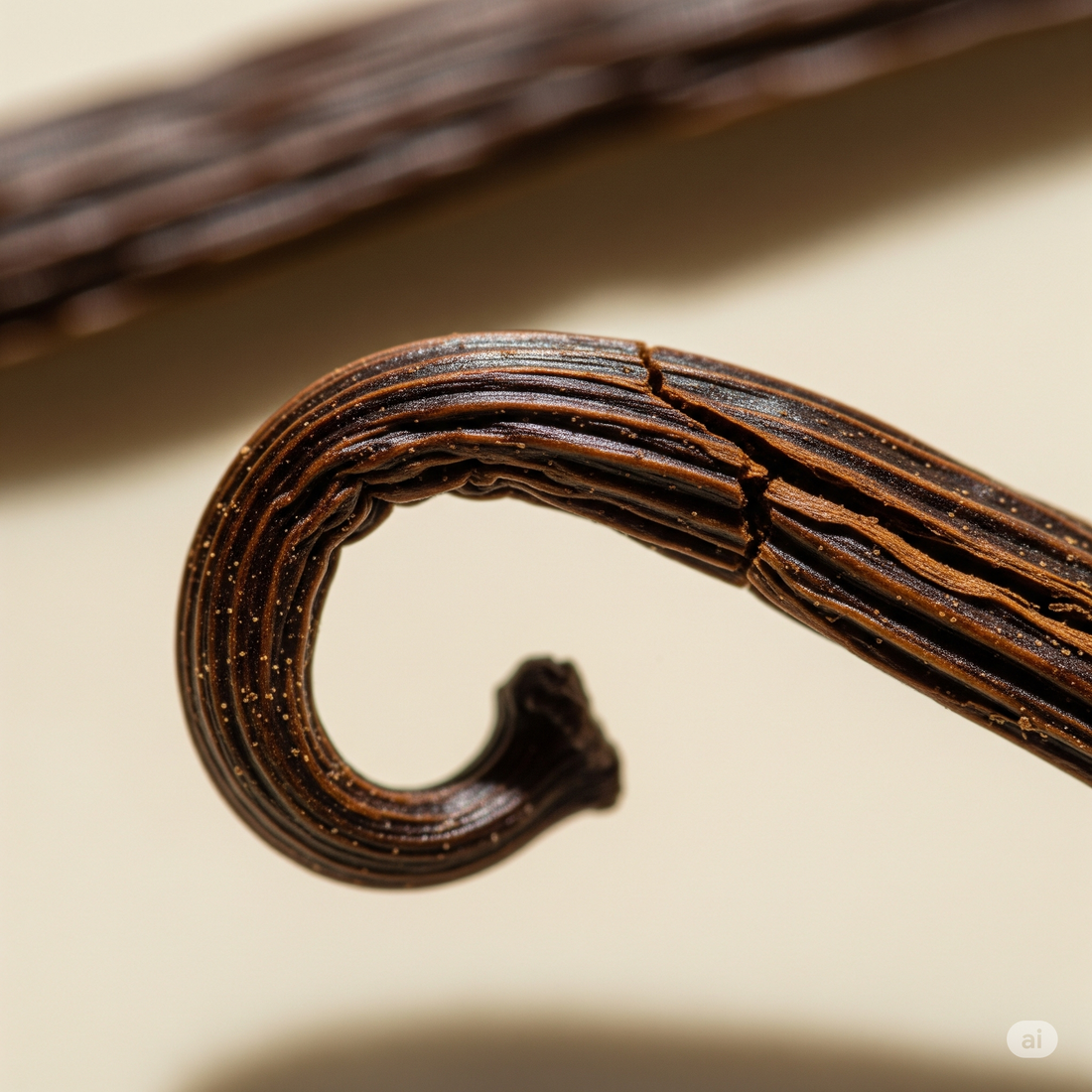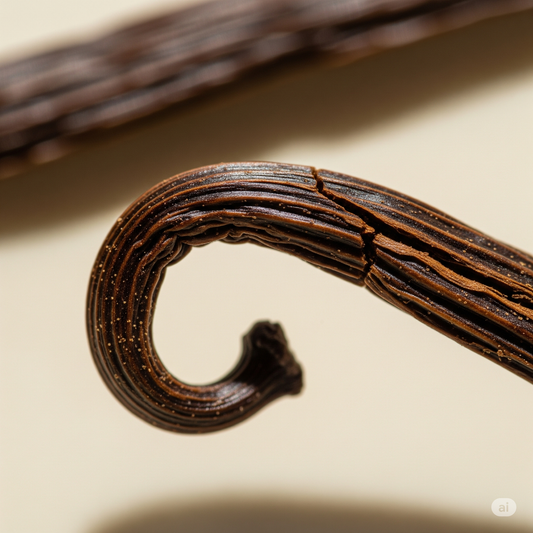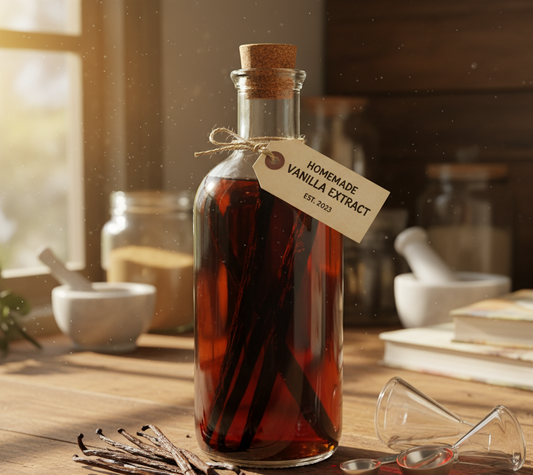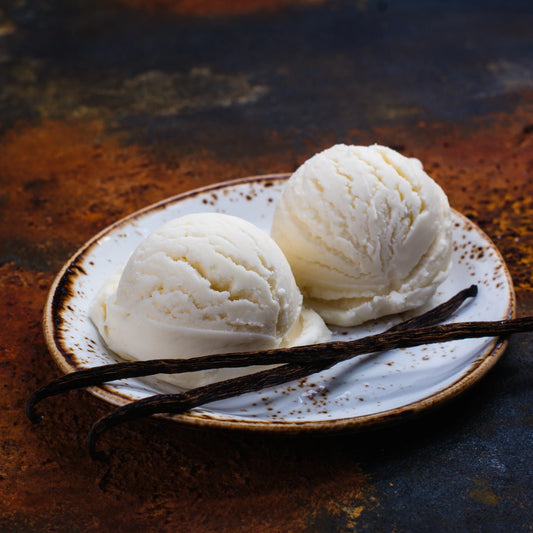
The Hidden Journey of a Vanilla Bean: From Flower to Flavor — 9 Riveting Steps That Turn Tiny Orchids into Liquid Gold
Share
Vanilla’s Place in the World
Vanilla began as a wild vine in the tropical forests of Mexico. Over centuries it traveled with traders and colonists and took root wherever the climate allowed: Madagascar, Indonesia, and parts of Africa including Uganda. Today, vanilla is one of the world’s most expensive spices because each vanilla bean requires intense labor from flower to cured pod.
Vanilla production is unique: the plant needs human attention at several stages. That’s why small farms and dedicated workers are at the heart of the vanilla industry. In this article we trace that human work, focusing on Ugandan vanilla—its character, its people, and the crafts that produce the aromas and flavors chefs prize.
Where Ugandan vanilla fits in
Uganda's highland regions and warm, humid lowlands offer conditions suitable for vanilla cultivation. While not the largest producer, Uganda has been gaining attention for high-quality beans that show rich, chocolatey notes and strong, sweet vanillin profiles. Smallholder farmers often grow vanilla alongside other crops, which supports biodiversity and household income.
The Vanilla Orchid: Anatomy of a Vanilla Bean
Each vanilla bean starts as an orchid flower that opens for a very short time—usually only for a single day. The flower is complex: it has a labellum (the lip), a column where pollen sits, and a tiny opening that normally only certain bees or hummingbirds can access in its native Mexico. Outside of that native range, natural pollinators are absent, so humans step in.
The fruit that forms after successful pollination is a green pod that will become a vanilla bean after months of curing. Vanilla Pods contain hundreds of tiny seeds and, more importantly, the biochemical building blocks that later create the familiar vanilla flavor during curing.
Hand Pollination: A Delicate Art
Because of the orchid’s short bloom window and lack of natural pollinators in many vanilla-growing countries, hand pollination is essential. This process requires skill, speed, and a steady hand.
Pollination usually happens early in the morning, when flowers open. A trained pollinator uses a thin stick or a small metal tool to lift the flower’s little flap and transfer pollen from the anther onto the stigma. When done correctly, the flower will set a pod within 24–48 hours. Timing is everything: if a flower is missed, it will drop and the chance is lost for that season.
Tools and techniques
-
Needle or bamboo splint — to lift the flap.
-
Bare fingers or a small tool — to move pollen.
-
Record-keeping — farmers often mark pollinated vines so they can track maturity windows.
-
Labor organization — pollination is often done by teams during peak blooming.
Hand pollination can be taught, but mastery takes practice. Because one flower opens only briefly, villages sometimes form groups to pollinate multiple farms the same morning.
Harvesting: When to Pick a Vanilla Pod
Vanilla Bean Pods are harvested when they begin to turn from bright green to a yellowish-green at the tip. If picked too early, the flavors won’t develop. If picked too late, the pod may split and lose quality. Generally, pods are harvested about 6–9 months after pollination, depending on variety and climate.
Harvesting is typically done manually, cutting pods with a small knife or pruning implement. Pods are handled carefully—bruises or cuts can damage future flavor development. After harvest, pods go straight into the curing process; delays can lower quality.
Processing & Curing: Drying, Sweating, and Grading
This section dives deep into the curing process—the phase that transforms a bland green pod into a fragrant, oily, brown vanilla beans. Many producers say that curing is both science and art.
Step 1 — Killing
Right after harvest, pods undergo a “killing” step to stop vegetative growth and begin enzyme activity. Methods vary:
-
Hot water blanching (brief immersion).
-
Scalding on hot pans.
-
Freezing or sun wilting in some systems.
The goal is to rupture cell walls and let enzymes start converting glucovanillin into vanillin and other aroma compounds.
Step 2 — Sweating (Fermentation)
Pods are then wrapped in blankets or placed in insulated boxes where they “sweat.” Temperatures and humidity are kept high to encourage enzymatic reactions and partial fermentation. This sweating can last for several days, and it’s here that much of the bean’s aroma begins to develop. Producers check pods regularly; when pods show brown skin and intense aroma, they move to the next phase.
Step 3 — Drying
After sweating, pods must be dried slowly to prevent mold and to preserve oils. Drying is a long process:
-
Initial sun-drying for a few hours, followed by
-
Shading and slow air-drying on racks or inside ventilated rooms.
The curing process takes weeks to months. Drying reduces moisture to a stable level, concentrates flavors, and develops that supple, oily texture that buyers prize.
Step 4 — Conditioning & Sweating Rounds
Producers often repeat short cycles of sweating and drying to refine flavor. Proper conditioning ensures beans are evenly dark, aromatic, and have the right moisture (usually 25–30% moisture initially, then finished lower). Master curers judge beans by smell, flexibility, and surface oil.
Step 5 — Grading and Sorting
Once stable, beans are graded by length, moisture, appearance, and aroma. Prime-grade beans are long, oily, and flexible with few blemishes. Lower grades may be cut, split, or used for extract production.
Quality control metrics
-
Moisture content — measured with a moisture meter.
-
Vanillin content — optionally tested in labs for extract buyers.
-
Visual inspection — for mildew, splits, or insect damage.
Why curing matters (short science)
Raw pods contain glucovanillin, an odorless precursor. During curing, glucovanillin is broken down by enzymes into vanillin and other compounds that create vanilla’s complex aroma. The longer, careful curing yields a richer, more complex bean.
This curing section is intentionally deep because it’s the heart of vanilla’s transformation. The process takes time and judgment—two things that make vanilla so valuable.
Grading, Packaging, and Traceability
After curing, beans are sorted into grades—often labeled by length and appearance. Packaging matters: beans are packed in airtight tins or vacuum bags to preserve aroma. Today, many buyers also expect traceability: lot numbers, farm origin, and batch dates help maintain quality and support fair-trade claims.
Traceability helps consumers know whether beans were grown ethically and allows buyers to pay premiums for higher quality or sustainable practices.
Flavor Chemistry: What Makes Vanilla Vanilla
Vanillin is the most famous compound linked to vanilla flavor, but real vanilla contains hundreds of compounds—phenols, aldehydes, and acids—that give it depth: floral top notes, smoky undertones, and the creamy base that pairs with so many foods. The relative balance of these compounds depends on variety, soil, climate, and curing method.
LSI keywords you’ll see around the topic: natural vanilla extract, vanillin content, terroir, vanilla bean grading, curing methods, vanilla aroma profile.
From Farm to Market: Logistics & Trade
Moving beans from rural farms to international markets involves cold chain considerations, paperwork for export (phytosanitary certificates), and relationships with buyers. Uganda exporters must meet international standards to avoid rejections. Beans destined for extract production may have different handling than those sold to pastry chefs.
Challenges include transportation delays, fluctuating prices, and the volatility of global vanilla markets. Many farmers mitigate risk by forming cooperatives or working with committed buyers who offer pre-finance.
Sustainability & Social Impact
Vanilla farming can be a lifeline for rural communities. But it also faces issues:
-
Price swings that affect incomes.
-
Risk of theft due to high value.
-
Environmental concerns if forests are cleared.
Sustainable approaches include agroforestry (growing vanilla under shade trees), fair-trade partnerships, and training programs to improve yields and reduce losses. When buyers pay fairly and invest in training, families and communities benefit.
Culinary Uses and Sensory Pairings
Vanilla is ubiquitous: ice cream, custards, sauces, and baked goods use whole beans, paste, or extract. Whole beans can be split and scraped into custards; pods can infuse syrups; and beans can be used in savory pairings—try them with roasted squash or white chocolate in sauces.
Sensory pairing tips:
-
With chocolate: match a bean with high vanillin for classic notes.
-
With citrus: use lighter beans to balance brightness.
-
With coffee: choose beans with smoky or chocolate undertones.
FAQs
Q1: What makes Ugandan vanilla different from Madagascar vanilla?
A: Ugandan vanilla often carries deeper, chocolatey and woody notes compared with Madagascar beans that are typically known for creamy, sweet, and floral profiles. Differences arise from soil, climate, bean variety, and curing methods. However, individual lots can vary widely.
Q2: How long does the whole process take from pollination to a cured bean?
A: From hand pollination to harvest usually takes 6–9 months. Curing then takes another 3–6 months depending on weather and processes. So, expect roughly 9–15 months total.
Q3: Can vanilla be grown without hand pollination?
A: Outside its native Mexico, natural pollinators are usually absent. Some farms experiment with bee-attracting plantings or greenhouses, but hand pollination remains the reliable method.
Q4: Why is natural vanilla so expensive?
A: Labor intensity—hand pollination, long curing, and careful drying—plus risks like theft and weather, drive costs up. Vanilla is high-value but high-input.
Q5: How should I store vanilla beans at home?
A: Keep them in an airtight container, away from direct sunlight, ideally in a cool, dark place. Avoid refrigeration because it can introduce condensation.
Q6: Are there sustainability certifications for vanilla?
A: Yes—fair-trade and organic certifications exist, and some industry groups track traceability. Certifications help, but local partnerships and direct trade often offer stronger support for farmers.
Conclusion: The Long-Lasting Value of a Bean
A single vanilla bean represents months of human care—skilled hands pollinating ephemeral flowers, patient driers and curers coaxing flavor from glucovanillin, and careful graders and traders weaving the product into global kitchens. Ugandan vanilla bean is part of that story, offering unique sensory notes and supporting rural livelihoods. When you use a real vanilla bean in a recipe, you’re tasting a journey from flower to flavor.



